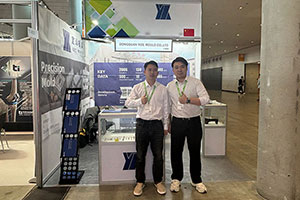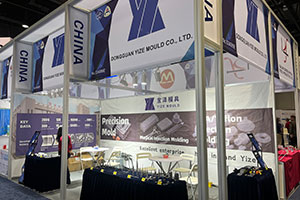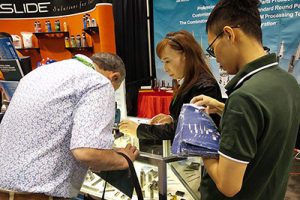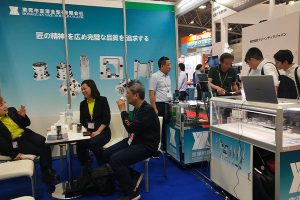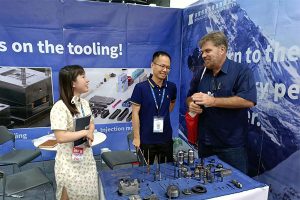Tungsten Carbide: The “Hardcore Pillar” of Industry – Past, Present, and Future
In the grand landscape of modern industry, there is a material that shines like a dazzling star. With its outstanding performance and wide range of applications, it stands out in […]
In the grand landscape of modern industry, there is a material that shines like a dazzling star. With its outstanding performance and wide range of applications, it stands out in numerous fields. This material is tungsten carbide, also known as hard metal. Tungsten carbide is an alloy material meticulously crafted through powder metallurgy by combining hard compounds of refractory metals with binding metals. Like a versatile player in the industrial field, it plays an irreplaceable role in various key areas with its unique physical and chemical properties. Next, this article will present a comprehensive and in-depth feast of knowledge about tungsten carbide from the aspects of its historical background, material characteristics, production processes, application fields, and future development trends.
I. Tracing the Origin of Tungsten Carbide: The “Hardcore Pioneer” Born from the Industrial Revolution
The development history of tungsten carbide is like a magnificent industrial epic, dating back to the early 20th century. At that time, the wave of the Industrial Revolution surged forward like a mighty torrent, driving rapid development across various industries and raising the requirements for material performance to new heights. Traditional steel materials gradually showed signs of inadequacy in terms of high strength and high wear resistance, and could no longer meet the increasingly stringent industrial demands.
Our factory business: carbide parts, mold parts, medical injection molds, precision injection molds, teflon PFA injection molding, PFA tube fittings. email: [email protected],whatsapp:+8613302615729.
At this critical historical juncture, scientists, driven by their enthusiasm for exploring new high-performance materials, embarked on an arduous research and development journey, and tungsten carbide emerged as a result. In 1923, German scientists, with their exceptional wisdom and unremitting efforts, successfully developed tungsten carbide materials with high hardness and high strength through powder metallurgy technology. They skillfully mixed and precisely pressed tungsten carbide with cobalt and other binding metal powders, followed by high-temperature sintering. This groundbreaking technological breakthrough was like lighting a beacon for the development of the tungsten carbide industry, laying a solid and stable foundation.
II. Decoding Tungsten Carbide: The “All-round Warrior” with Outstanding Performance
High Hardness and High Strength: An Invincible Force
The hardness of tungsten carbide is truly remarkable, far exceeding that of ordinary steel materials, and can generally easily reach above HRC60. At the same time, it also possesses extremely high tensile and compressive strengths. Like a warrior clad in armor, it can withstand huge workloads and stand firm in various harsh industrial environments.
Excellent Wear Resistance: The Secret Weapon for Long-lasting Sharpness
Tungsten carbide is rich in a large number of hard compounds, such as tungsten carbide (WC). These hard compounds are like countless tiny “blades”, endowing tungsten carbide with outstanding wear resistance. In high-speed cutting, grinding, and other processes, tungsten carbide cutting tools are like skilled swordsmen, capable of maintaining sharpness for a long time, greatly reducing the frequency of replacement, and significantly improving work efficiency, thus saving a large amount of costs for enterprises.
Good Corrosion Resistance: The “Guardian” Unfazed by Harsh Environments
At room temperature, tungsten carbide exhibits good chemical stability, like a loyal guardian, able to strongly resist the corrosion of most acids, alkalis, and salts. This enables tungsten carbide to maintain stable performance in harsh environments such as the chemical and marine industries, providing reliable guarantees for the production and development of related industries.
High Thermal Conductivity and Low Coefficient of Thermal Expansion: The “Wisdom Master” for Precise Temperature Control
Tungsten carbide has excellent thermal conductivity and can act like an efficient “heat transporter”, quickly transferring heat and avoiding local overheating. At the same time, its low coefficient of thermal expansion allows it to maintain good dimensional stability in high-temperature environments, like a steady “helmsman”, ensuring the normal operation of equipment under high-temperature conditions.
III. Exploring Tungsten Carbide Production: An “Industrial Legend” Forged by Powder Metallurgy
The production process of tungsten carbide is like a well-orchestrated magic show, mainly including steps such as powder preparation, mixing, pressing, sintering, and subsequent processing.
Powder Preparation: The Source of Quality
First, it is necessary to prepare high-purity tungsten carbide and binding metal powders. The particle size and morphology of these powders are like the cornerstones of building materials, having a crucial impact on the performance of the final product. Scientists ensure that the purity and quality of the powders reach the optimal level through advanced technologies and strict quality control.
Mixing: The Beauty of Uniformity
The prepared powders are mixed in a certain proportion, just like a skilled chef blending ingredients, ensuring that each component is evenly distributed and laying a good foundation for subsequent process steps.
Pressing: Shaping the Prototype
The mixed powders are loaded into a mold and pressed by a press, like a sculptor carefully carving a work of art, to form a blank with a certain shape and density. This step requires precise control of pressure and pressing time to ensure the quality and performance of the blank.
Sintering: Metallurgical Fusion
The pressed blank is placed in a high-temperature furnace for sintering, which is one of the most critical steps in the entire production process. During sintering, metallurgical bonding occurs between the powder particles, like countless small particles holding hands tightly to form a solid tungsten carbide material. This process requires strict control of temperature and time to ensure that the performance of the tungsten carbide material reaches the best state.
Subsequent Processing: Striving for Perfection
The sintered tungsten carbide material still needs to undergo subsequent processing such as grinding and polishing, like a beautician giving the final touch-up to a work of art, to achieve the required precision and surface quality. After this series of refined processing techniques, the tungsten carbide material can finally present itself to the world in a perfect form.
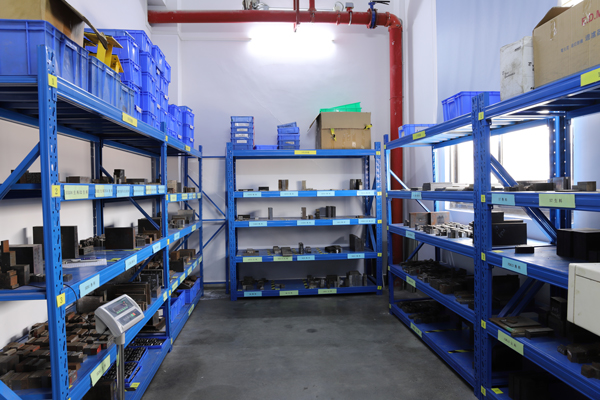
IV. Applications of Tungsten Carbide: The “Flower of Industry” Blooming in Multiple Fields
Cutting Tools: The “Right-hand Man” in Mechanical Processing
The high hardness and wear resistance of tungsten carbide make it an ideal material for manufacturing cutting tools. Turning tools, milling cutters, drills, and other tungsten carbide cutting tools are widely used in the mechanical processing field. Like skilled craftsmen, they can efficiently and accurately complete various processing tasks, providing strong impetus for the development of the mechanical manufacturing industry.
Mold Manufacturing: The “Unsung Hero” Behind the Scenes
Tungsten carbide molds have characteristics such as high precision, high wear resistance, and long service life. Like unsung heroes behind the scenes, they play an important role in mold manufacturing in industries such as plastics, rubber, and die-casting. They can ensure the quality and precision of products, improve production efficiency, and reduce production costs, creating huge economic benefits for enterprises.
Geological Drilling: The “Pioneering Warrior” Exploring the Earth
Tungsten carbide drill bits are widely used in geological exploration and oil drilling fields. Like fearless pioneering warriors, they can easily penetrate hard rock layers with their high hardness and wear resistance, significantly improving drilling efficiency and providing strong guarantees for humans to explore the mysteries deep within the Earth.
Medical Devices: The “Precision Guardian” Protecting Health
Tungsten carbide can also be used to manufacture medical devices, such as dental drills. Its excellent performance can meet high-precision and high-efficiency medical needs, like a precision guardian, protecting people’s health. In the medical field, the application of tungsten carbide materials has made important contributions to improving medical standards and enhancing patients’ quality of life.
V. Looking Ahead at Tungsten Carbide: The “Trendsetter” in the Wave of Future Technologies
With the rapid development of science and technology, the application fields of tungsten carbide will continue to expand like bamboo shoots after a spring rain. In the future, tungsten carbide will play a greater role in high-tech fields such as aerospace, new energy vehicles, and electronic information, becoming a key force driving the development of these fields.
Research and Development of New Tungsten Carbide Materials: The “Magic Key” for Performance Upgrades
Scientists are actively exploring the addition of other elements or compounds to improve the performance of tungsten carbide. For example, adding rare earth elements can improve the toughness and impact resistance of tungsten carbide, enabling it to remain intact under huge impact forces; using nanotechnology to improve the microstructure of tungsten carbide can enhance its comprehensive performance, like injecting a magical power into tungsten carbide, making it more proficient in future industrial applications.
Promotion of Green and Environmentally Friendly Production Technologies: The “Green Engine” for Sustainable Development
With the continuous improvement of environmental awareness, future tungsten carbide production will place greater emphasis on energy conservation, emission reduction, and resource recycling. Adopting low-energy-consumption and low-pollution sintering processes, like installing a green engine for tungsten carbide production, can reduce energy consumption and environmental pollution; recycling waste tungsten carbide materials can achieve resource recycling and contribute to sustainable development.
Application of Intelligent Manufacturing Technologies: The “Wisdom Brain” for Production Transformation
With the help of advanced automation equipment and artificial intelligence technologies, intelligent, precise, and efficient tungsten carbide production can be achieved. Through real-time monitoring and data analysis, like equipping the production process with a wise “brain”, production process parameters can be optimized promptly, improving product quality and production efficiency, and leading tungsten carbide production into a new era.
VI. Conclusion: Tungsten Carbide – A Shining Star in the Future of Industry
As a high-performance alloy material, tungsten carbide occupies a pivotal position in modern industrial production and has broad application prospects. By gaining an in-depth understanding of its historical background, material characteristics, production processes, and application fields, we seem to have opened a door to the future of industry, enabling us to better grasp its important role in future technological development.
With the continuous progress of new materials, new processes, and intelligent manufacturing technologies, it is believed that tungsten carbide will demonstrate its unique advantages and value in more fields, like the brightest star in the night sky, illuminating the path of industrial development and leading us towards a better future. Let us look forward to tungsten carbide creating more brilliance on the industrial stage!


